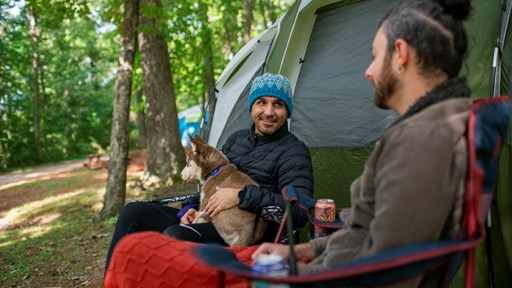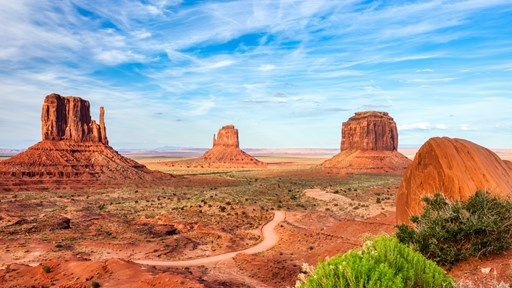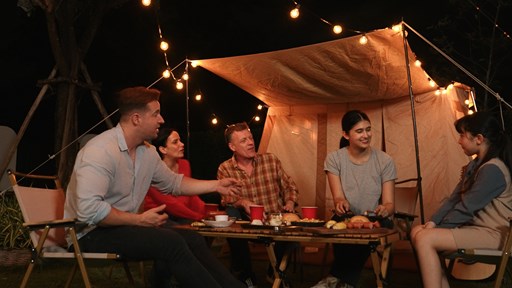Camping amid air pollution can be challenging. Wildfires and smoke pollutants are at an all-time high, and when air quality is poor, campers must sometimes postpone or forfeit their camping trips. However, many campgrounds have implemented precautions and strategies so that families and friends can enjoy the great outdoors and camping activities safely. Read KOA’s air quality blog post for more information!
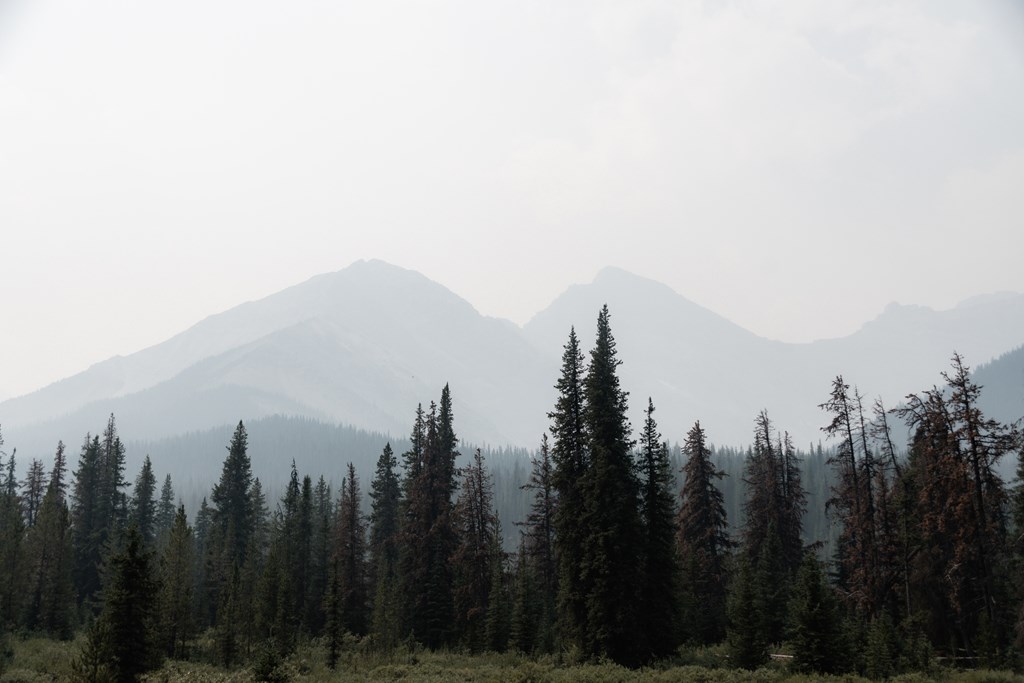
What Causes Poor Air Quality?
Wildfires and uncontrolled fires that lead to wildfires can cause poor air quality. For example, during wildfire season, fires begin and spread rapidly across several locations. Wildfire smoke often releases chemicals like carbon monoxide, nitrogen oxide, sulfur dioxide and particulate matter into the atmosphere. These chemicals contaminate the atmosphere, environment and air quality.
Do Masks Help With Poor Air Quality?
Masks can help protect you from smoke and poor air quality. If you are on an indoor camping trip and need to go outside during poor air quality conditions, covering your mouth and nose is a great way to avoid breathing in the air. While N95 masks offer the best protection, a surgical mask or scarf will effectively prevent you from breathing in contaminated air.
Who Does Poor Air Quality Affect?
Poor air quality can affect adults, children and infants. It can severely affect those with allergies and respiratory issues like asthma, lung disease and other chronic illnesses. Breathing in contaminated air for extended periods can have numerous effects on your health, especially if you have an existing chronic condition. The following are common health effects of poor air quality:
- Strokes
- Heart disease
- Respiratory infections like chronic bronchitis
- Lung cancer
- Asthma
Poor air quality can also worsen and trigger conditions like asthma, causing numerous symptoms. Poor air quality symptoms in people with and without respiratory conditions include the following:
- Wheezing
- Difficulty breathing
- Coughing
- Phlegm on the chest and when coughing
- Chest tightness
- Sore throat
- Eye and nose irritation
- Inflamed airways
- Shortness of breath
- Fatigue
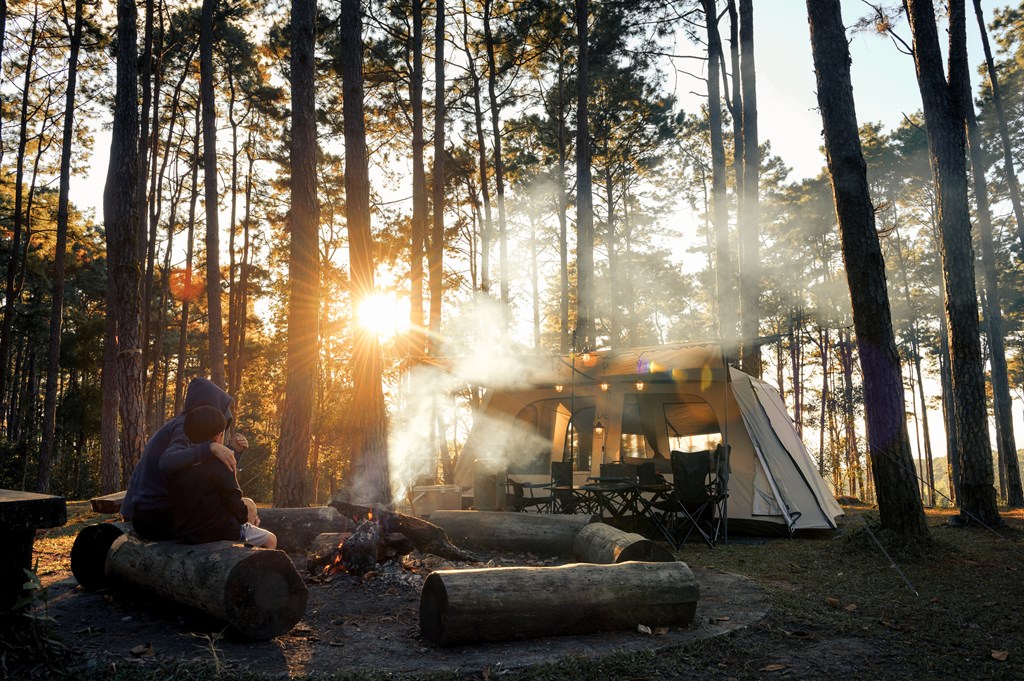
Can You Camp When Air Quality Is Poor?
Camping in poor air quality can be harmful for you and your family, but there are ways to camp while avoiding exposure to polluted air. If you cannot avoid breathing in contaminated air, postponing or finding alternative camping accommodations might be the better option. Here are some tips for camping in poor air quality.
Monitor Wildfires
Use online tools to track wildfire progressions and identify the severity of wildfires and smoke. These tools provide estimates on hazardous wildfires in certain areas. For example, the map might mark your campground or surroundings with a yellow or orange fire warning. These warnings can indicate large fires and heavy smoke. If you see these warnings, postponing or finding an alternative campground is the best solution.
Check Air Qualify Scores
You can use an online tool to monitor the air quality in and around your campground location. These tools can provide an air quality index (AQI) score, helping you determine if visiting an area is safe. Scores are categorized into green, yellow or orange categories, with green being the best.
Consider the daily air quality forecast, and opt to camp when the quality is healthy or in the green zone. You can stay indoors at a campground if the air is in the yellow zone. However, you can still be exposed to poor air while staying indoors, so opting for short indoor camping trips might be a better solution.
Follow Your Campground Recommendations
Your campground is one of the best sources when deciding if it is safe to camp. They can offer warnings and recommendations regarding wildfires and poor air quality. If they have social media, follow their posts and suggestions on camping during wildfire season. You can also contact them directly for updates. If your campground suggests that camping at the site is not safe due to wildfires and poor air quality, then it is best to follow instructions.
Comply With Fire Regulations
If you can camp safely indoors or outdoors, remember to follow fire rules to prevent worsening fires and smoke. Your campground will issue fire regulations depending on the severity of the fires. These regulations can include:
- Building small fires and keeping them contained in isolated areas.
- Keeping a fire extinguisher nearby when making a fire.
- Never leave a fire unattended.
- Extinguishing or putting the fire out properly with water before leaving your campsite.
Postpone Your Trip
While postponing your trip might be challenging, it might be necessary in the face of severe wildfires and poor air quality. It can also be the safest option to prevent health effects and symptoms of poor air quality. Speak to your campground about rescheduling your camping trip to fall or another season.
Try Indoor Camping Accommodations
If it is safe to stay at your campground during wildfires, speak to your campground about staying in an RV or booking a cabin. This way, you can still camp while limiting exposure to poor air quality.
However, considering your campground suggestions, wildfire warnings and air quality scores is still vital when camping indoors during wildfires. You might still have to open the windows and go outside for air, so ensure you take precautions to avoid breathing in air pollutants.
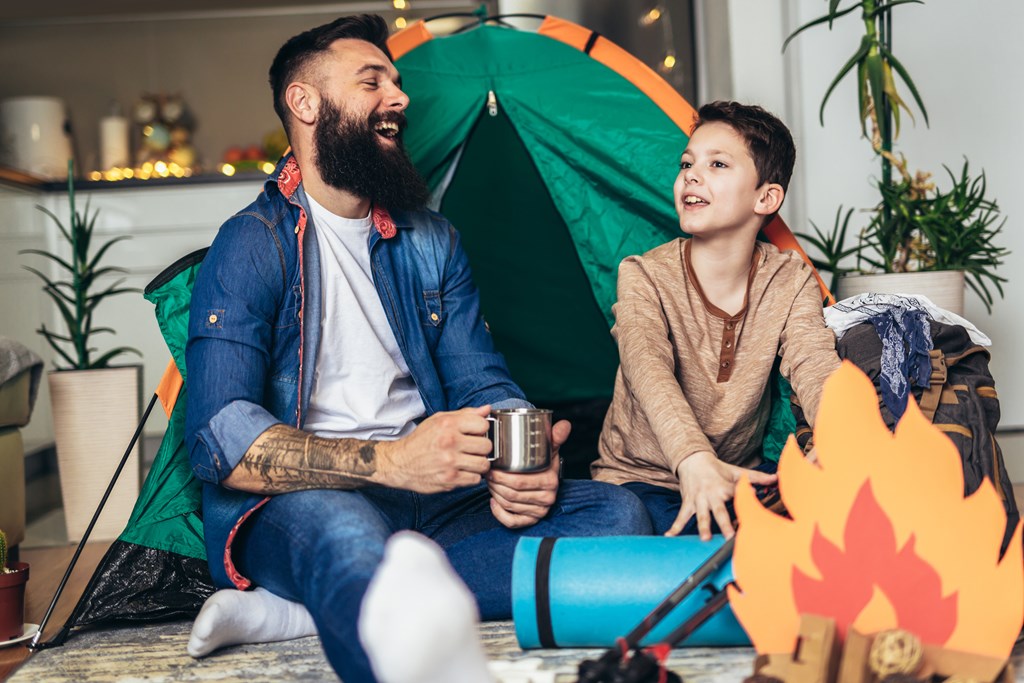
Indoor Camping Activity Ideas
If you can camp indoors, there are many ways to stay entertained and bring the outdoors inside. Here are some fun indoor camping activities:
- Make traditional camping meals. Stick to traditional camping meals like hot dogs and s’mores to make your stay feel like a typical outdoor camping trip. Make and enjoy your meals around a pretend campfire or use an indoor fireplace if possible. Check fire bans before making an indoor fire.
- Pitch a tent inside. Set up your tent and sleeping bags indoors to turn your indoor accommodation into an outdoor campsite. Use blankets and pillows to spruce up your indoor tents.
- Play board games. Set chairs around your tents, have a pretend campfire and enjoy some board games.
- Have an indoor picnic. Lay your picnic blanket on the floor to enjoy some favorite camping meals as you would outdoors.
- Play physical games to stay active. Set up obstacle courses using your room’s furniture, and race each other for a fun physical activity.
- Tell camp stories. While you might be indoors, there is still room for a scary story. Switch the lights off, get your torches out and enjoy some traditional camp stories.
- Decorate your indoor accommodation. If possible, bring nature inside. Decorate your indoor space with greenery, leaves, sticks and other earthy elements to make it feel and look like the outdoors.
- Listen to nature. Listen to trees, birds and other nature sounds. You can turn it into a game to see who can guess the nature sound or bird.
- Paint or write about the outdoors. Get creative, look through your window and use the outdoors as your muse for a painting or short story.
Trust KOA for Safe Camping
Kampgrounds of America understands the importance of camping in a healthy and safe environment. KOA offers precautions for camping in wildfire season and always puts camper health and safety first. When air quality is poor, check with your KOA Campground about rescheduling or to get more information about precautions. Contact KOA to learn more!
About the Author: Kampgrounds of America
Kampgrounds of America is the largest system of open-to-the-public campgrounds in the world, with over 500 locations across the United States and Canada. Founded in Billings, MT in 1962, KOA’s family of campground brands – KOA Journey, KOA Holiday and KOA Resort – today serve more than a million camping families each year. KOA is dedicated to “connecting people to the outdoors and each other” by providing people with a variety of camping experiences and the information they need to make the most of their camping trip. Read more of their camping and travel resources by visiting KOA.com/blog.




















